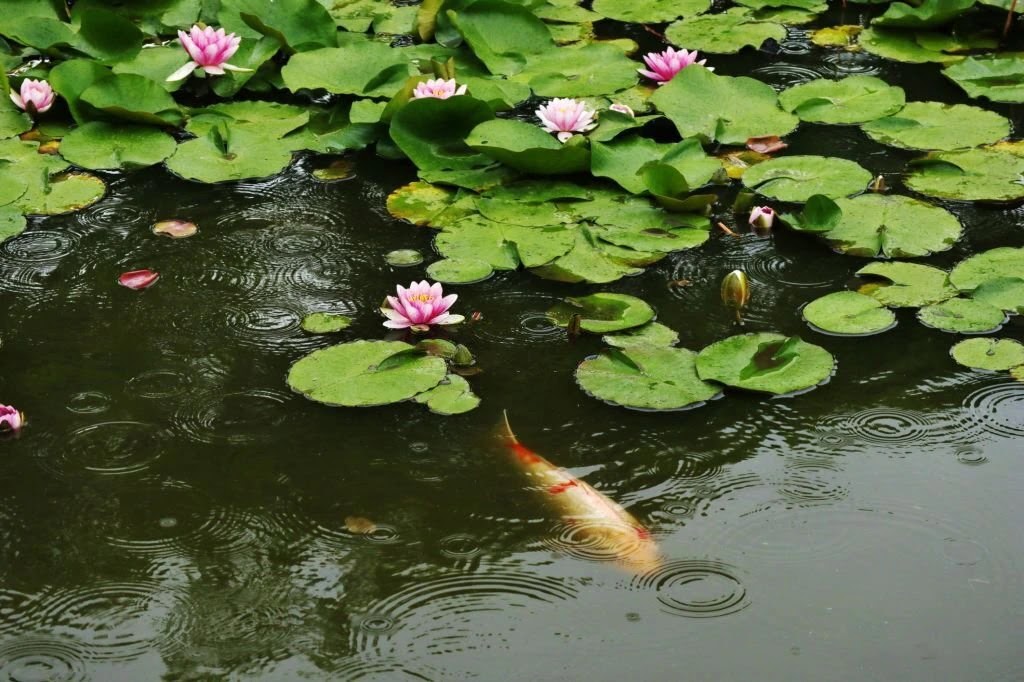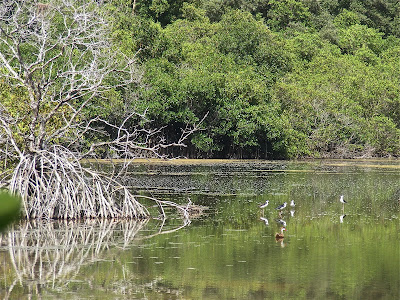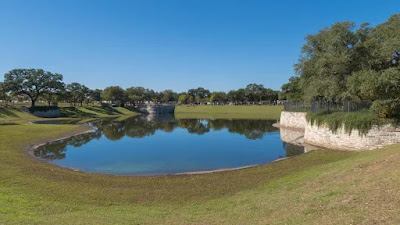Introduction
Origin of the word 'Ecosystem'
Defining Pond Ecosystem
Types of Pond Ecosystem
FAQs
Origin of the word 'Ecosystem'
Defining Pond Ecosystem
Types of Pond Ecosystem
- Natural Freshwater Ponds
- Salt Pond Ecosystems
- Artificial Garden Ponds
- Urban Retention Ponds
- Seasonal Vernal Pools
- Alpine Glacial Ponds
- Farm Ponds
FAQs
Types of Pond Ecosystem: A Comprehensive Exploration
Introduction
An ecosystem refers to a biological community of living organisms, such as plants, animals, and microorganisms, interacting with one another and their physical environment. This includes both the living (biotic) and non-living (abiotic) components of an environment and the intricate relationships and processes that exist within it. These interactions involve the exchange of energy and matter, and they contribute to the overall balance and stability of the ecosystem. Ecosystems can vary greatly in size and complexity, ranging from a small pond to a vast forest or even a whole biome like a desert or a coral reef. Each ecosystem has its own unique set of species and environmental conditions, and they are all interconnected on a global scale.
Origin of the word 'Ecosystem'
The term "ecosystem" was coined by British ecologist Sir Arthur Tansley in the early 1930s. Tansley introduced this term in a publication in 1935, in an effort to encapsulate the complex interplay between living organisms and their environment. He derived the word from the Greek words "oikos", meaning "house" or "dwelling place", and "systema", meaning "system" or "organized entity". By combining these elements, Tansley created a term that effectively captures the concept of a self-contained, interactive system where living organisms coexist with their physical surroundings. Since its introduction, the word "ecosystem" has become fundamental in ecology, forming the basis for understanding the intricate relationships within natural environments. It's now widely used in various fields related to biology, environmental science, and sustainability.
Defining Pond Ecosystem
A pond ecosystem refers to a specific type of aquatic ecosystem that encompasses all the living organisms and their physical environment within a pond. This includes a variety of biotic elements such as aquatic plants, algae, fish, amphibians, insects, microorganisms, and other organisms that inhabit or interact with the pond. Additionally, the abiotic components like water, sunlight, temperature, rocks, sediments, and nutrients are integral parts of this ecosystem.
Pond ecosystems are characterized by their relatively small size and still or slow-moving water. They can vary greatly in depth and can be natural or man-made. Due to their size, ponds often have distinct ecological dynamics compared to larger bodies of water like lakes or rivers. They provide unique habitats for a diverse range of species, serving as breeding grounds, feeding areas, and shelter for various aquatic and semi-aquatic organisms.
The interactions and relationships among the living organisms and their physical environment in a pond ecosystem contribute to a delicate balance. Factors such as water quality, nutrient levels, and seasonal changes play crucial roles in shaping the dynamics of the pond ecosystem. Understanding these relationships is essential for conservation efforts and maintaining the health of pond ecosystems.
Pond ecosystems are marvels of biodiversity, providing a habitat for an array of organisms, from microscopic algae to amphibians and waterfowl. In this article, we will embark on a detailed exploration of the different types of pond ecosystems, shedding light on their unique characteristics.
Types of Pond Ecosystem
1. Natural Freshwater Ponds
Natural freshwater ponds are geological treasures, formed by a combination of geological processes, such as glacial erosion and spring-fed sources. These pristine bodies of water serve as sanctuaries for a rich tapestry of life. Water lilies and floating vegetation grace the surface, providing shelter for a variety of fish and amphibians. The tranquility of these ponds is a testament to nature's artistry, and they often play crucial roles in local ecosystems.
2. Salt Pond Ecosystems
Salt pond ecosystems are a unique type of aquatic environment characterized by high salinity levels. These ponds are often found in coastal areas and are influenced by tidal movements. The high salinity creates a challenging environment for many species, but specialized organisms like halophytes and certain species of algae and crustaceans thrive in these conditions. Salt pond ecosystems play a crucial role in coastal ecosystems and are essential habitats for specialized wildlife.
3. Artificial Garden Ponds
Crafted with creativity and care, artificial garden ponds are human-made marvels that replicate the beauty and functionality of natural ponds. These carefully designed water features are found in private gardens and public parks, and they host a curated selection of aquatic plants and ornamental fish. Koi, with their vibrant colors, often become the centerpiece of these ponds. They provide not only visual delight but also a sanctuary for a diverse range of aquatic life.
4. Urban Retention Ponds
In the heart of bustling cities, retention ponds stand as oases of nature amidst the urban sprawl. These engineered bodies of water serve a critical function in managing stormwater runoff, preventing flooding in densely populated areas. Beyond their utilitarian purpose, they offer habitats for a surprisingly diverse array of waterfowl, insects, and plants. The juxtaposition of urban life and thriving nature in these ponds is a testament to the resilience of natural systems.
5. Seasonal Vernal Pools
Vernal pools are transient treasures that come to life in the wake of winter rains. These temporary habitats are invaluable for numerous species, especially amphibians and invertebrates. Creatures like fairy shrimp and spotted salamanders rely on the temporary nature of these pools to avoid predation. The delicate balance of life in vernal pools is a testament to the intricate dance between seasonal cycles and biodiversity.
6. Alpine Glacial Ponds
Perched high in the mountains, alpine glacial ponds are remnants of a bygone ice age. Fed by the melting glaciers above, these ponds boast crystal-clear waters and breathtaking mountain backdrops. Unique species, such as alpine newts and specialized aquatic plants, have adapted to thrive in this challenging environment. These ponds are not only scenic wonders but also valuable repositories of biodiversity.
7. Farm Ponds
Nestled within agricultural landscapes, farm ponds serve as vital resources for irrigation and livestock. These human-made reservoirs play a role in sustainable land management. They are home to a delicate balance of aquatic life, including fish species like catfish and bass. This coexistence of agriculture and aquatic ecosystems exemplifies the potential for harmonious interactions between human activity and nature.
Conclusion
Exploring the diverse types of pond ecosystems unveils the intricate web of life that thrives within these aquatic worlds. Whether naturally formed or carefully crafted, each pond is a testament to the adaptability and resilience of nature. By understanding and appreciating these ecosystems, we forge a deeper connection with the natural world. The next time you encounter a pond, take a moment to marvel at the hidden wonders beneath its surface.
FAQs
1. How do Pond Ecosystems Foster Biodiversity?
Pond ecosystems support biodiversity through a complex web of interactions. Aquatic plants provide habitats and food sources, while various species of fish, amphibians, and invertebrates contribute to the ecosystem's intricate balance.
2. What distinguishes a natural pond ecosystem?
Natural pond ecosystems are typically formed by geological processes like glacial activity or volcanic eruptions. They often have stable, self-sustaining communities of plants and animals that have evolved over time. Natural ponds tend to have a more diverse range of species compared to man-made ponds.
3. What is the Significance of Natural Freshwater Ponds?
Natural freshwater ponds play a vital role in the broader landscape. They act as crucial habitats for numerous species, aid in water filtration, and even influence local climate patterns. Their presence is essential for the overall health of the ecosystem.
4. Are there any specific examples of notable pond ecosystems?
Yes, there are several notable pond ecosystems around the world. Some examples include Walden Pond in Massachusetts, USA, which inspired Henry David Thoreau's writings; Arikok Pond in Aruba, known for its unique cacti-adapted ecosystem; and Victoria Pond in Africa, which is one of the largest natural ponds in the world.
5. What role do pond ecosystems play in the larger ecological context?
Pond ecosystems play a crucial role in the larger ecological context by providing habitats for numerous species, contributing to nutrient cycling, and supporting a diverse range of life forms. They also serve as important components of watersheds, influencing local hydrology and water quality.







Post a Comment
Please do not enter any spam link in the comment box